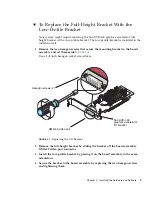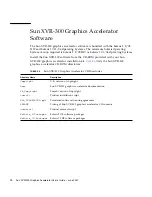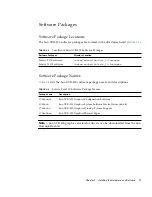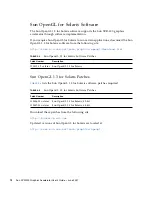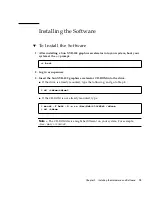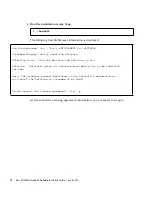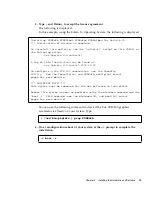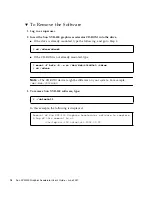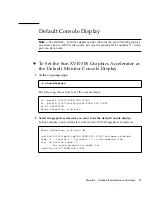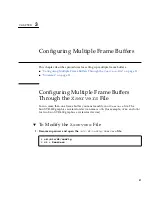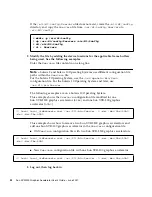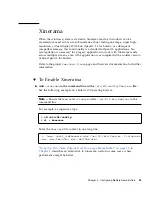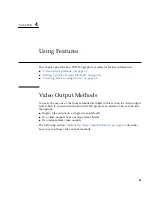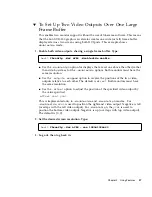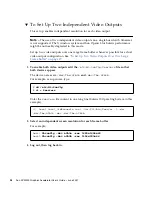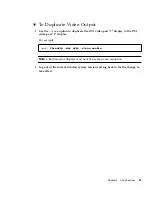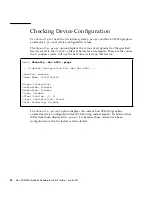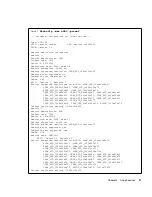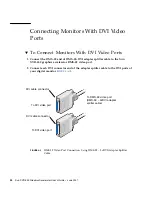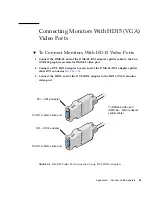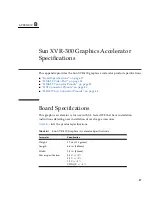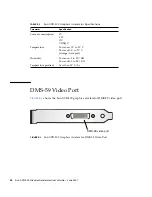
Chapter 3
Configuring Multiple Frame Buffers
23
Xinerama
When the window system is started in Xinerama mode, all windows can be
seamlessly moved across screen boundaries, thus creating one large, super high-
resolution, virtual display. With Sun OpenGL 1.3 for Solaris, or subsequent
compatible releases, this functionality is extended to OpenGL applications. No
recompilation is necessary for a legacy application to work with Xinerama mode
across multiple screens, even if the application was compiled with an older version
of Sun OpenGL for Solaris.
Refer to the proper
Xservers(1)
man page and Xservers documentation for further
information.
▼
To Enable Xinerama
●
Add
+xinerama
to the command line in the
/etc/dt/config/Xservers
file.
See the following example on a Solaris 10 Operating System.
Note –
Ensure that you enter
+xinerama
after
/usr/X11/bin/Xserver
in the
command line.
For example, as superuser, type:
Enter the
Xservers
file content in one long line.
“To Set Up Two Video Outputs Over One Large Frame Buffer” on page 27
, in
Chapter 4
, describes an alternative to Xinerama, useful in some cases, where
performance might be better.
#
cd /etc/dt/config
#
vi + Xservers
:0
Local local_uid@console root /usr/X11/bin/Xserver :0 +xinerama
-dev /dev/fbs/nfb0 -dev /dev/fbs/nfb1
Summary of Contents for XVR-300
Page 6: ...xii Sun XVR 300 Graphics Accelerator User s Guide June 2007 ...
Page 8: ...xiv Sun XVR 300 Graphics Accelerator User s Guide June 2007 ...
Page 32: ...20 Sun XVR 300 Graphics Accelerator User s Guide June 2007 ...
Page 44: ...32 Sun XVR 300 Graphics Accelerator User s Guide June 2007 ...
Page 48: ...36 Sun XVR 300 Graphics Accelerator User s Guide June 2007 ...
Page 61: ...Index 49 X Xinerama restrictions 24 using 23 Xservers file 21 22 28 ...
Page 62: ...50 Sun XVR 300 Graphics Accelerator User s Guide June 2007 ...

